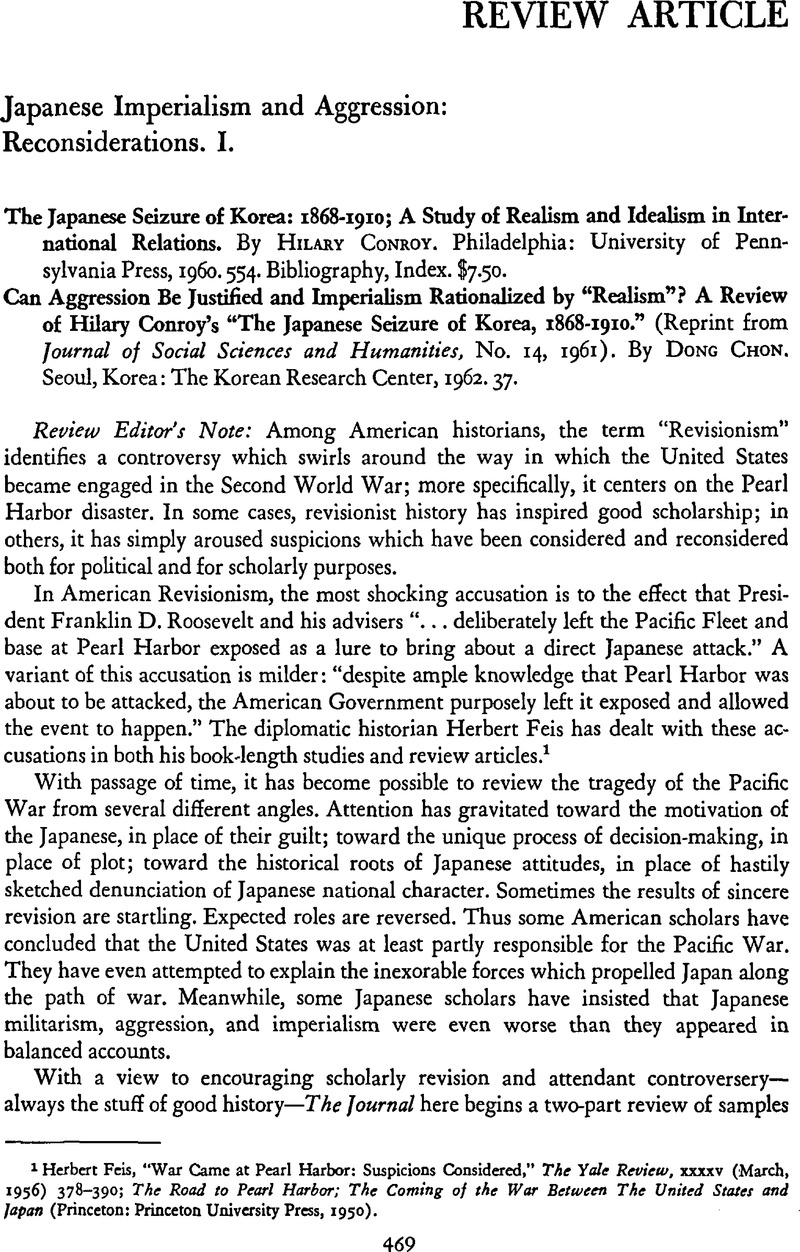No CrossRef data available.
Published online by Cambridge University Press: 23 March 2011

1 Feis, Herbert, “War Came at Pearl Harbor: Suspicions Considered,” The Yale Review, xxxxv (03, 1956) 378–390Google Scholar; The Road to Pearl Harbor; The Coming of the War Between The United States and Japan (Princeton: Princeton University Press, 1950).Google Scholar
2 For example, Conroy, Hilary, “Japanese-Korean Relations in the Meiji Era and Their Later Implication,”Google Scholar Columbia University Seminar on Modern East Asia: Japan,” December 14, 1962 (mimeo.)
3 See the review by Williston, Frank in The Journal of Asian Studies, XII (1963), 2:8–219.Google Scholar
4 Conroy, , The Japanese Seizure, p. 7.Google Scholar
5 Conroy, , “Japanese—Korean Relations,” p. 5.Google Scholar
6 Chon, Dong, Japanese Annexation of Korea: A Study of Korean—Japanese Relations to 1910, (Boulder: University of Colorado [Ph.D. Dissertation], 1955).Google Scholar
7 Conroy, , “Japanese-Korean Relations,” p. 6.Google Scholar
8 Mr. Lee Soon-won, a doctoral candidate at Rutgers—the State University, is completing a dissertation on the social nature of the Japanese-Korean conflict, 1945 to date.
9 Conroy, , “Japanese-Korean Relations,” pp. 8–9.Google Scholar
10 Butow, Robert J. C., Tojo and the Coming of the War (Princeton: Princeton University Press, 1961)Google Scholar; Lu, David J., From the Marco Polo Bridge to Pearl Harbor; A Study of Japan's Entry into World War 11 (Washington: Public Affairs Press, 1961).Google Scholar